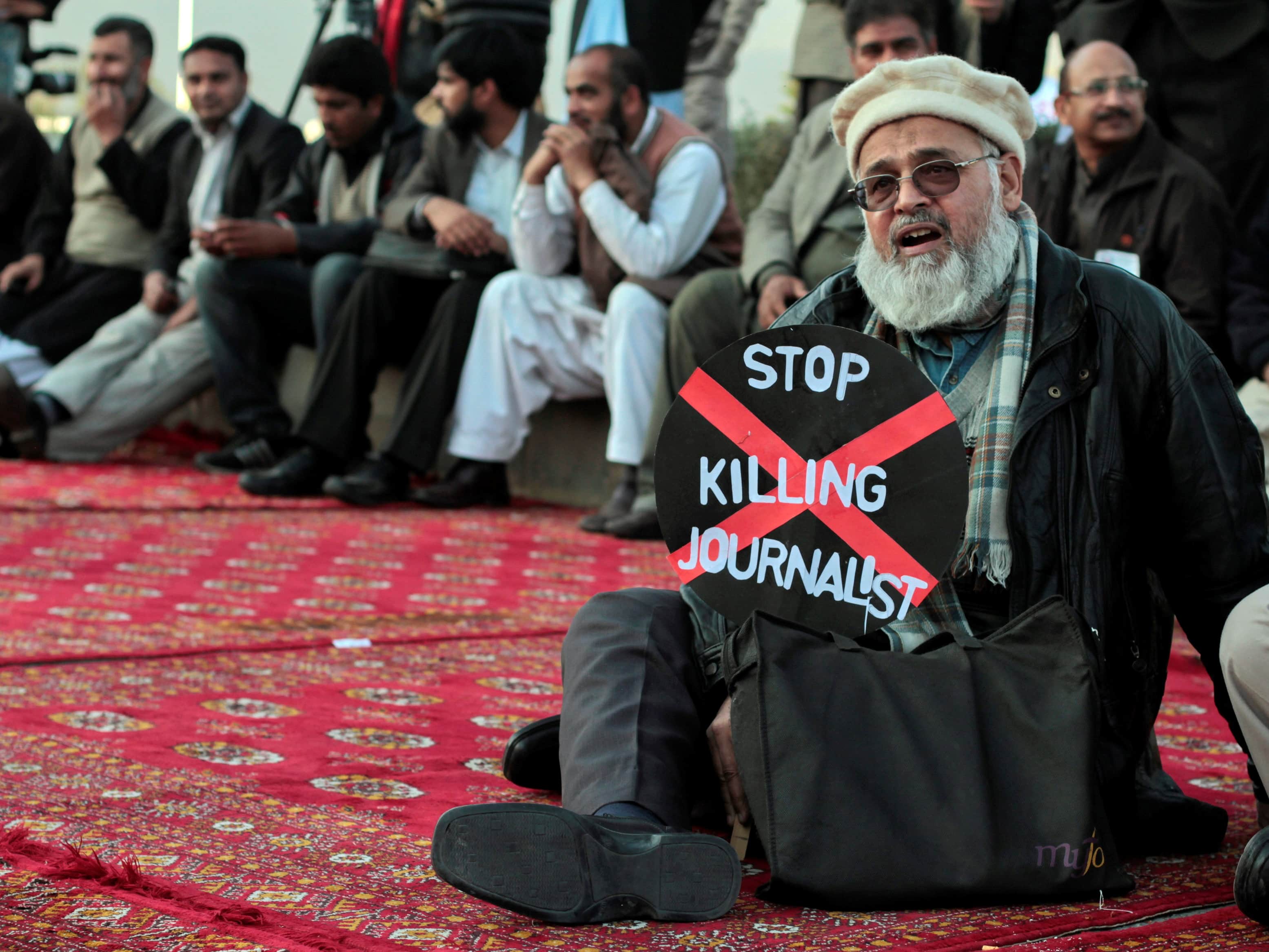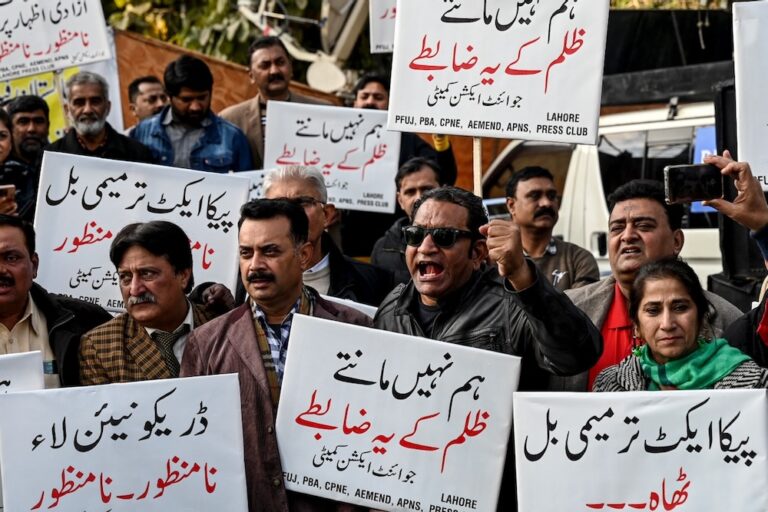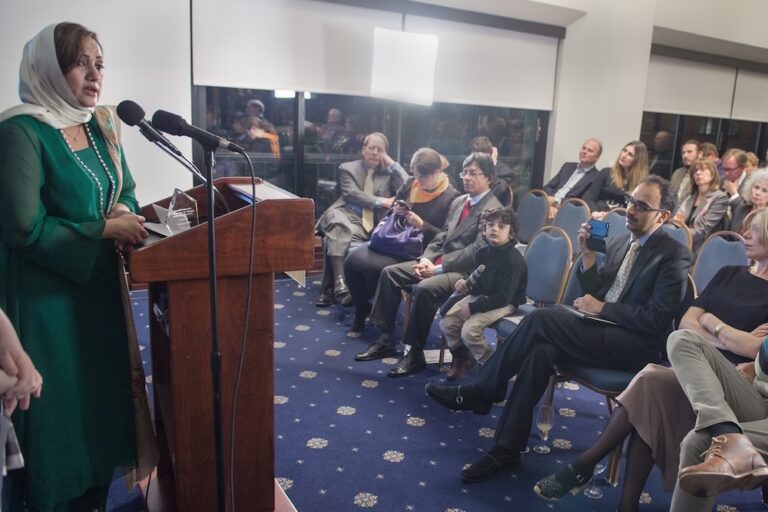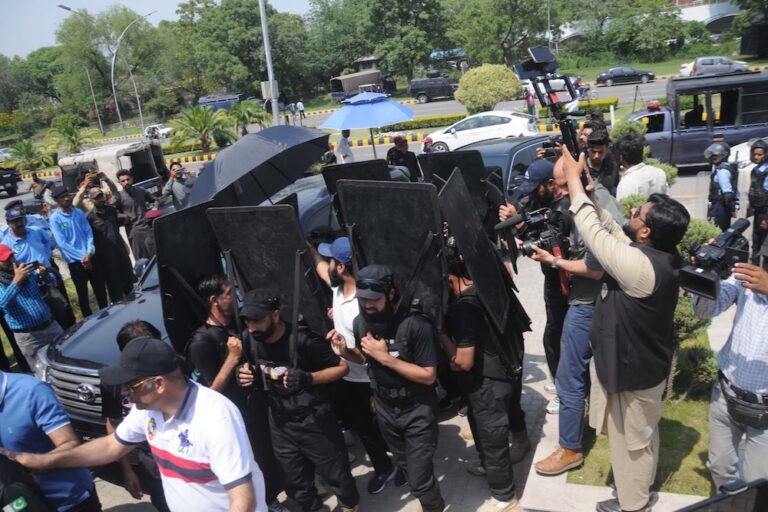With the release of a report on widespread impunity, CPJ calls on the incoming government of Pakistan to urgently address the issue of violence against the press.
With the release of a new report on widespread impunity, the Committee to Protect Journalists calls on the incoming government of Pakistan to urgently address the issue of violence against the press by bringing perpetrators of past crimes to justice.
“Pakistan has one of the world’s worst records of prosecuting anti-press violence, with authorities failing to convict a single suspect in 23 journalist murders over the past decade,” said CPJ Asia program coordinator, Bob Dietz. “The situation is dire as journalists are targeted not only by militants, criminals, and warlords, but also by political, military, and intelligence operatives. These threats have gone completely unpunished over the past decade and have made the country one of the deadliest in the world for the press.”
The report, written for CPJ by independent journalist Elizabeth Rubin, exposes the intricate web of manipulation, intimidation, retribution, and impunity that has led to a significant rise in journalist murders over the past five years. Military officials, intelligence agents, and criminal elements of political parties threaten and attack the news media without fear of punishment. CPJ has requested meetings with top government officials in Pakistan to discuss the report’s findings.
“Government, military, and intelligence officials are suspected of involvement in at least seven journalist murders in the past decade,” said Dietz. “The newly elected government led by Nawaz Sharif has an opportunity to stem the murderous silencing of the press by implementing security mechanisms for the media and delivering justice in these killings.”
The report examines the targeted killings of journalists Wali Khan Babar in Karachi and Mukarram Khan Aatif in the tribal areas, along with the underlying culture that has led to so many other killings. Babar, a correspondent for Geo TV, was shot on a busy street in Karachi in January 2011. Police arrested several suspects affiliated with the Muttahida Qaumi Movement, a leading political party, but the case has been derailed by threats, intimidation, and murders of key figures in the investigation. Five witnesses or law enforcement officials connected to the case have been murdered, and two prosecutors were fired without explanation.
Rubin’s reporting found that Pakistani officials may have been behind the targeted killing of Aatif, a seasoned reporter for Deewa Radio, the Pashto-language service of the U.S. government-funded Voice of America. Aatif was murdered at a mosque north of Peshawar in January 2012. Just weeks before, he had covered a deadly U.S. military attack against a Pakistani army post in Salala. The Taliban, it turned out, were operating freely in Salala – right next to the Pakistani army. Immediately after his reports, Aatif was threatened by intelligence and military officials.
Pakistani authorities have pledged to address the utter lack of justice in press murders, but a weak civilian government has been unable or unwilling to stand up to the ISI, army, and criminal political elements. The recent election of a new government in Pakistan, the first successful change of civilian administration in the country’s history, offers an opportunity to correct this record.
Given this climate of fear and injustice, Pakistani journalists have begun taking action. Representatives of dozens of outlets and groups began crafting a plan to improve journalist safety as part of a U.N.-sponsored effort. Among its many measures, the U.N. plan aims to strengthen journalist safety programs and assist member states in developing ways to prosecute the killers of journalists.
CPJ’s report calls on the government to bring about successful prosecutions in the 23 unsolved cases of journalist murders over the past decade; provide sufficient staffing and funding for police prosecutors; enact statutory oversight for the nation’s intelligence services; and cooperate fully in the implementation of the U.N. plan. Media organizations must expand security training efforts and strengthen cooperative professional efforts to ensure that all professional groups speak as one. The international community must fully support these efforts with funding and expertise.
“Manipulation, intimidation, and targeting of journalists to conceal reporting on issues vital to citizens and international partners must end,” said Dietz. “Addressing the culture of impunity in anti-press violence will enable the citizens of Pakistan to be informed about and participate in their country’s future.”
Roots of Impunity: Pakistan’s Endangered Press and the Perilous Web of Militancy, Security, and Politics
More than 20 journalists have been murdered in reprisal for their work in Pakistan over the past decade. Not one case has been solved, not a single conviction won. This perfect record of impunity has fostered an ever-more violent climate for journalists. Fatalities have jumped in the past five years, and today, Pakistan ranks among the world’s deadliest nations for the press. The targeted killings of two journalists – Wali Khan Babar in Karachi and Mukarram Khan Aatif in the tribal areas – illustrate the culture of manipulation, intimidation, and retribution that has led to this killing spree. A CPJ special report by Elizabeth Rubin.
Introduction
By Bob Dietz, CPJ Asia program coordinator
1. The Murder of Wali Khan Babar
Babar was an unusual face on the air in Karachi: Popular and handsome, he was a Pashtun from Baluchistan. He was also a rising star at Geo TV, which was grooming him to be an anchor. His murder provides an unfortunate prism through which to study the state of media, justice, power, and politics in Pakistan.
2. A Death in Khyber Pakhtunkhwa
Officially, there is no mystery to Mukarram Khan Aatif’s death. He is another casualty of the war on terror, executed by the Taliban because of his reporting for a U.S. government-backed news outlet. But unofficially, many do not believe Aatif was killed on orders of the Taliban, at least not for the reasons publicly stated.
3. Intimidation, Manipulation, and Retribution
A couple of years ago, prominent journalists began publicizing the threats they were receiving from intelligence agencies. It was a risky calculation, but silence, they reasoned, encouraged further intimidation. Has their tactic worked? For the well-known it’s offered some protection. But for journalists who work out of the spotlight, threats still lead to something worse.
The murder of Saleem Shahzad in May 2011 galvanized journalists across Pakistan in a way that few other events have. For a short time their power was felt. They secured a high-level investigation. They named intelligence officers who had threatened Shahzad and other journalists. But two years later, precious little has come of their efforts.
CPJ’s Recommendations
The organization’s recommendations to Pakistani authorities, news media, and the international community.
Appendix
Capsule reports on journalists killed from 2003 through 2012.
Video: Roots of Impunity
The unsolved murders of three journalists reflect a government that is not guaranteeing the rule of law or fundamental human rights. CPJ’s Bob Dietz narrates. By Dave Mayers and Dana Chivvis



